7 Most Promising AI Use Cases in Education
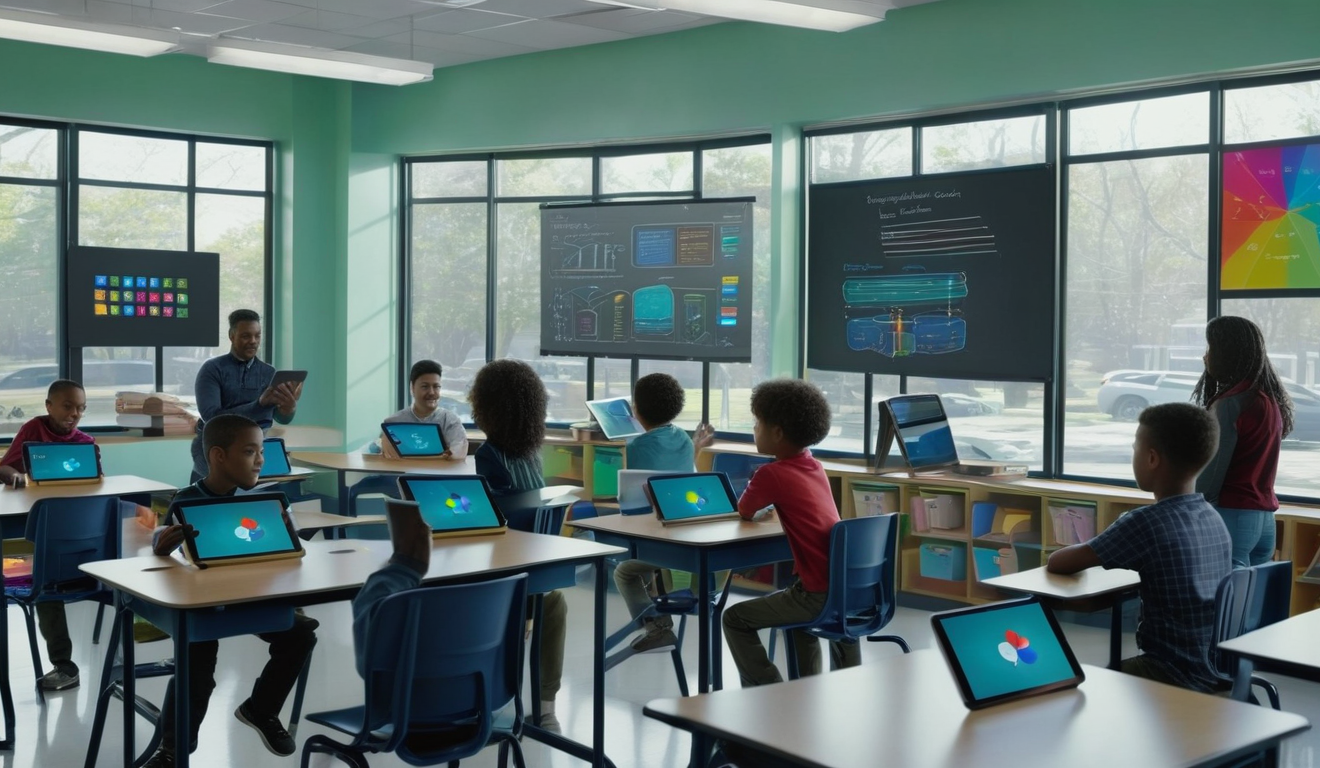
In today’s rapidly evolving world, artificial intelligence is not just a buzzword; it’s a transformative force reshaping various sectors, especially education. The integration of AI in educational settings is paving the way for innovative solutions that enhance learning experiences, improve administrative efficiency, and personalize education for diverse student needs. Imagine a classroom where every student receives tailored support, where administrative tasks are automated, and where learning is more engaging than ever before. This article explores the seven most promising AI use cases in education that are making this vision a reality.
AI enables tailored educational experiences by analyzing student data, adapting content to individual learning styles, and pacing. This personalization fosters better engagement and understanding among students. For instance, AI can adjust the difficulty level of a math problem based on a student’s previous performance, ensuring they are neither bored nor overwhelmed. Such adaptability is crucial for maintaining student interest and promoting effective learning outcomes.
These AI-driven platforms provide real-time feedback and support to students, simulating one-on-one tutoring experiences. Imagine having a personal tutor available 24/7, ready to assist with specific challenges and enhance comprehension of complex subjects. Intelligent tutoring systems can identify areas where a student struggles and offer targeted exercises to improve their skills.
AI streamlines administrative tasks such as grading, scheduling, and resource allocation. This automation allows educators to focus more on teaching and less on paperwork, thus improving overall efficiency. For example, AI can automatically grade multiple-choice tests, providing instant feedback to students and saving teachers countless hours. As a result, educators can dedicate more time to engaging with their students and enhancing the learning experience.
By analyzing historical data, AI can predict student performance and identify at-risk learners. This capability informs interventions, enabling educators to proactively support students in achieving their academic goals. For instance, if a student’s grades begin to decline, AI can alert teachers, who can then reach out to provide assistance before the situation worsens.
AI can create immersive learning environments by integrating gamification elements. This approach makes education more interactive and enjoyable, boosting student motivation and retention. Picture a classroom where students earn points and badges for completing assignments or participating in discussions, transforming mundane tasks into exciting challenges.
AI-powered translation tools break down language barriers in education. These tools make learning materials accessible to non-native speakers, promoting inclusivity in diverse classrooms. Imagine a student who speaks a different language being able to access the same resources as their peers, ensuring that everyone has equal opportunities to succeed.
AI enhances VR and AR experiences in education, providing students with interactive simulations and visualizations. This technology deepens understanding and creates memorable learning moments. For example, students can explore ancient civilizations through virtual field trips or conduct science experiments in a safe, controlled virtual environment.
AI can develop sophisticated assessment systems that evaluate student performance accurately and efficiently. These tools provide detailed insights into learning outcomes and areas for improvement, allowing educators to tailor their teaching strategies effectively. Imagine receiving instant feedback on a writing assignment, complete with suggestions for improvement, all thanks to AI.
AI technologies offer tailored resources and support for students with disabilities. This ensures that educational content is accessible and aligned with their unique learning needs. For instance, AI can provide speech-to-text services for students with hearing impairments, making learning more inclusive.
AI can analyze teaching practices and provide personalized feedback, helping educators refine their skills and adapt to new methodologies effectively. This continuous professional development is essential for teachers to stay current in an ever-changing educational landscape.
AI facilitates collaborative learning by connecting students with peers and resources. This fosters teamwork and communication skills essential for the modern workforce. Imagine a platform where students can work together on projects, share ideas, and learn from one another, all guided by AI recommendations.
As AI technology continues to evolve, its integration into educational settings will expand, promising innovative solutions that further enhance teaching and learning experiences for future generations. The potential of AI in education is limitless, and it’s exciting to think about what the future holds.
| AI Use Cases | Description |
|---|---|
| Personalized Learning | Tailored educational experiences based on student data. |
| Intelligent Tutoring | Real-time feedback and support simulating one-on-one tutoring. |
| Administrative Automation | Streamlining administrative tasks for improved efficiency. |
| Predictive Analytics | Identifying at-risk learners through data analysis. |
| Gamification | Enhancing engagement through game-like elements. |
| Language Translation | Breaking down language barriers for inclusivity. |
| VR & AR Integration | Providing interactive simulations for deeper understanding. |
“The future of education is not just about learning; it’s about learning how to learn.”
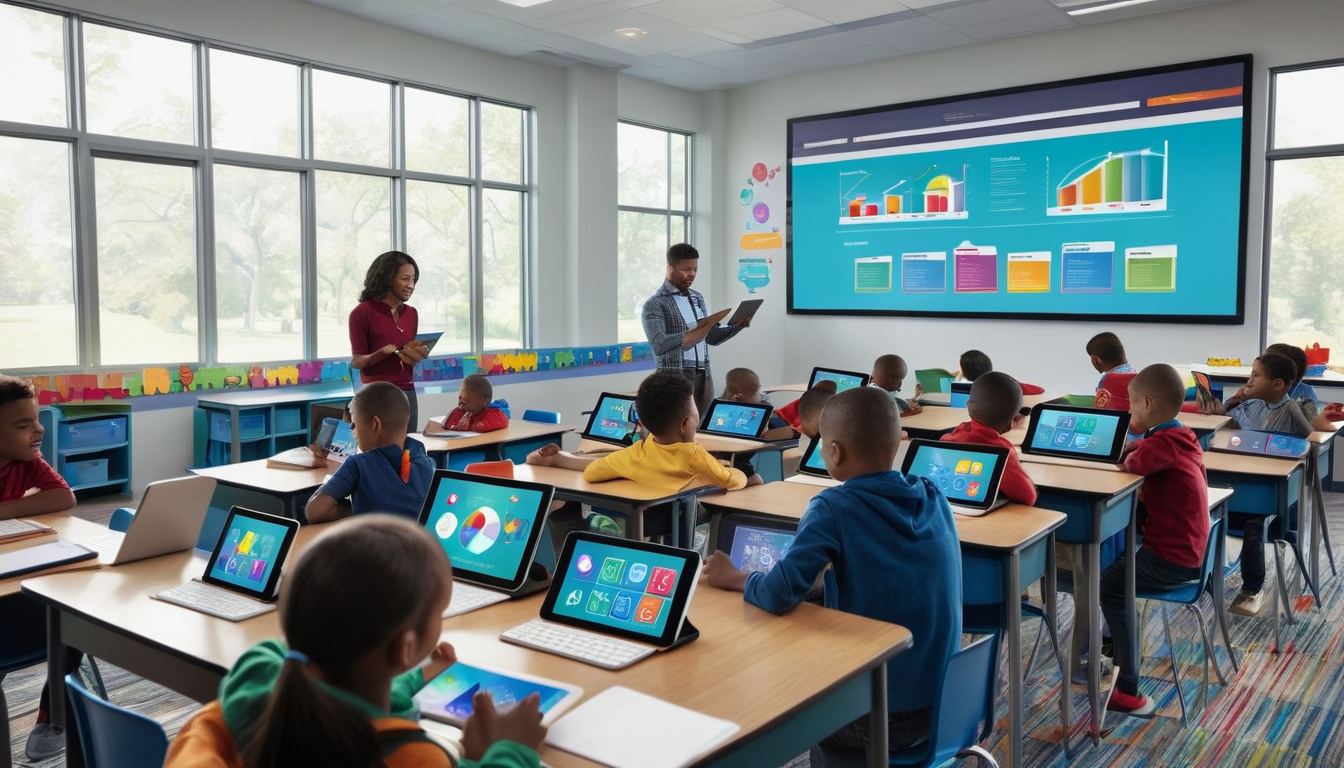
Personalized Learning Experiences
In the ever-evolving landscape of education, are becoming increasingly vital. Imagine a classroom where each student receives tailored instruction that caters specifically to their unique learning styles and paces. This is not just a dream; it’s a reality made possible by the power of artificial intelligence (AI). By analyzing vast amounts of student data, AI can adapt educational content, ensuring that every learner has the best opportunity to thrive.
The traditional one-size-fits-all approach to education often leaves many students behind. However, with AI, educators can create a customized learning journey for each student. For instance, AI can identify whether a student excels in visual learning, auditory learning, or kinesthetic learning. By leveraging this information, teachers can provide resources that align with these preferences, thereby enhancing comprehension and retention.
Let’s take a closer look at how AI achieves this:
| Learning Style | AI Adaptation |
|---|---|
| Visual | Interactive diagrams, videos, and infographics |
| Auditory | Podcasts, audiobooks, and verbal instructions |
| Kinesthetic | Hands-on activities and simulations |
The benefits of personalized learning experiences extend beyond mere engagement. They also foster a deeper understanding of complex subjects. When students learn at their own pace, they can spend more time on challenging concepts while quickly moving through material they grasp easily. This flexibility not only boosts confidence but also cultivates a love for learning.
Furthermore, AI can help educators identify which students may need additional support. By continuously monitoring student progress and performance, AI systems can flag those who might be struggling, allowing teachers to intervene sooner rather than later. This proactive approach is crucial in ensuring that no student falls through the cracks.
In conclusion, the integration of AI into personalized learning experiences is revolutionizing education. As we embrace these technologies, we are not just enhancing the learning process; we are also paving the way for a more inclusive and effective educational environment. After all, education should be as unique as the students it serves. As the famous quote goes, “Education is not the filling of a pail, but the lighting of a fire.” With AI, we are lighting more fires than ever before.
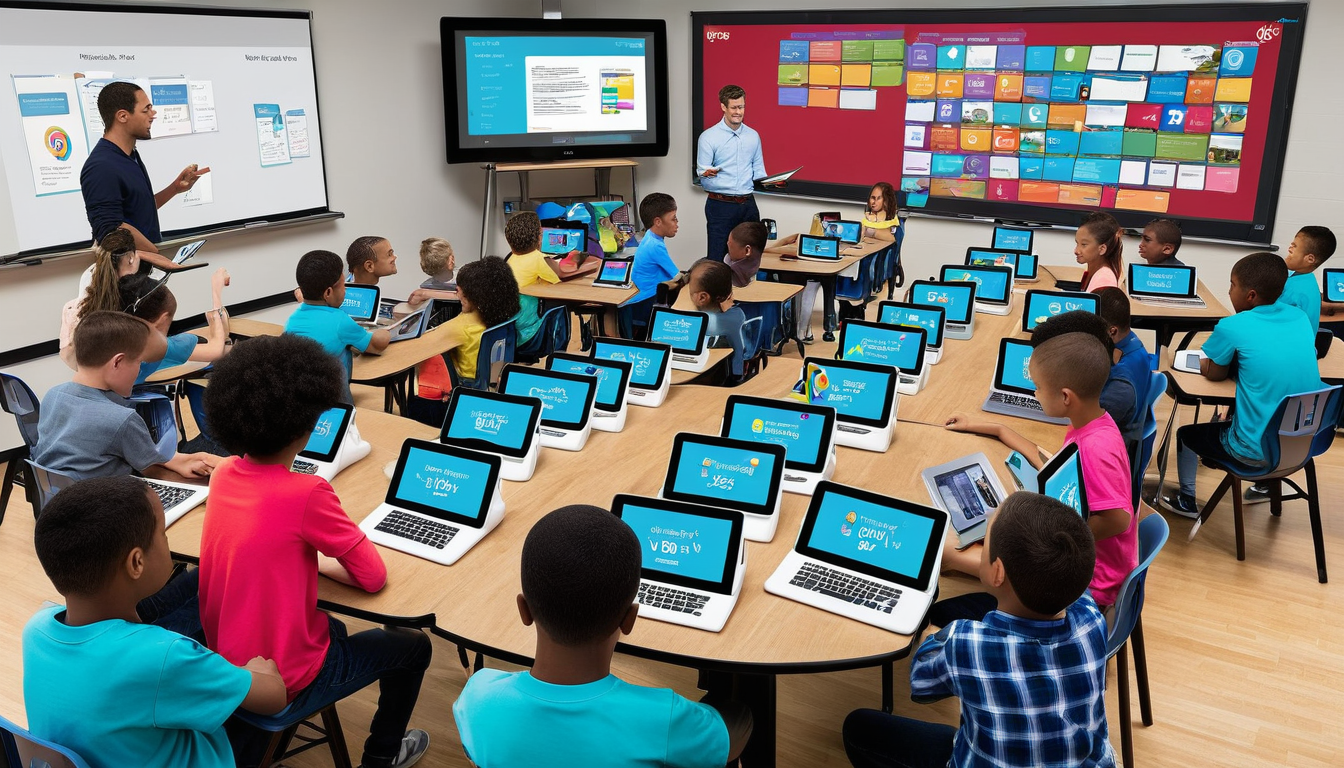
Intelligent Tutoring Systems
In the rapidly evolving landscape of education, Intelligent Tutoring Systems (ITS) are emerging as game-changers, providing personalized learning experiences that cater to individual student needs. Imagine having a personal tutor available 24/7, ready to help you tackle complex subjects and provide real-time feedback. That’s exactly what ITS offers! By leveraging the power of artificial intelligence, these systems analyze a student’s performance, identify areas of struggle, and adapt instructional content accordingly. This ensures that learning is not only effective but also engaging.
One of the standout features of ITS is their ability to simulate a one-on-one tutoring experience. As students interact with the system, it gathers data on their responses and learning patterns. This data is then used to tailor the educational content, making it more relevant and aligned with each student’s unique learning style. For instance, if a student struggles with a particular math concept, the system can provide additional practice problems or alternative explanations until mastery is achieved.
The benefits of Intelligent Tutoring Systems extend beyond individual learning. They can significantly enhance the overall educational experience by:
- Providing immediate feedback, which helps students correct mistakes in real-time.
- Offering personalized learning paths that adapt to the pace of each student.
- Tracking progress over time, allowing both students and educators to monitor improvements.
To illustrate the impact of ITS, consider the following table that compares traditional tutoring methods with Intelligent Tutoring Systems:
| Feature | Traditional Tutoring | Intelligent Tutoring Systems |
|---|---|---|
| Availability | Limited hours | 24/7 access |
| Personalization | Dependent on tutor’s assessment | Real-time adaptation based on data |
| Feedback | Delayed, often after a session | Immediate and continuous |
| Scalability | Limited to one-on-one sessions | Can serve thousands of students simultaneously |
In conclusion, Intelligent Tutoring Systems represent a significant leap forward in educational technology. They not only enhance student learning experiences but also empower educators with valuable insights into student performance. As we continue to embrace the potential of AI in education, the future looks bright for personalized learning. Just imagine how much more effective education could be when every student has access to their own intelligent tutor!

Administrative Automation
In the fast-paced world of education, powered by artificial intelligence is revolutionizing the way schools and universities operate. Imagine a world where tedious tasks like grading, scheduling, and resource allocation are handled by intelligent systems, freeing up educators to focus on what they do best: teaching. This shift not only improves efficiency but also enhances the overall educational experience for both students and teachers.
AI-driven tools can streamline a variety of administrative processes. For example, grading can be automated through sophisticated algorithms that evaluate student submissions with remarkable accuracy. This means teachers can spend less time buried in paperwork and more time engaging with their students. Additionally, AI can optimize scheduling by analyzing various factors, such as teacher availability, student preferences, and room capacities, creating a seamless timetable that meets everyone’s needs.
Moreover, resource allocation becomes a breeze with AI. By analyzing usage patterns and predicting future needs, educational institutions can ensure that resources are utilized effectively, minimizing waste and maximizing impact. This is particularly important in today’s budget-conscious environment, where every dollar counts. Here’s a closer look at some key areas where administrative automation can make a difference:
| Task | AI Automation Benefits |
|---|---|
| Grading | Faster feedback, reduced workload for teachers |
| Scheduling | Optimized timetables, improved resource management |
| Resource Allocation | Efficient use of materials, cost savings |
As we dive deeper into the realm of , it’s essential to consider the impact on teachers’ professional lives. By reducing the burden of administrative tasks, educators can devote more time to developing innovative teaching strategies and fostering meaningful relationships with their students. This not only enhances job satisfaction but also contributes to a more vibrant learning environment.
In conclusion, the integration of AI in administrative processes is not just a trend; it’s a necessary evolution in the educational landscape. As we embrace these technologies, we must also remain mindful of the human element in education. After all, while AI can handle the logistics, it’s the passion and dedication of teachers that truly inspire and empower students to reach their full potential.
“The future of education is not just about technology; it’s about how we use that technology to create a better learning experience.”
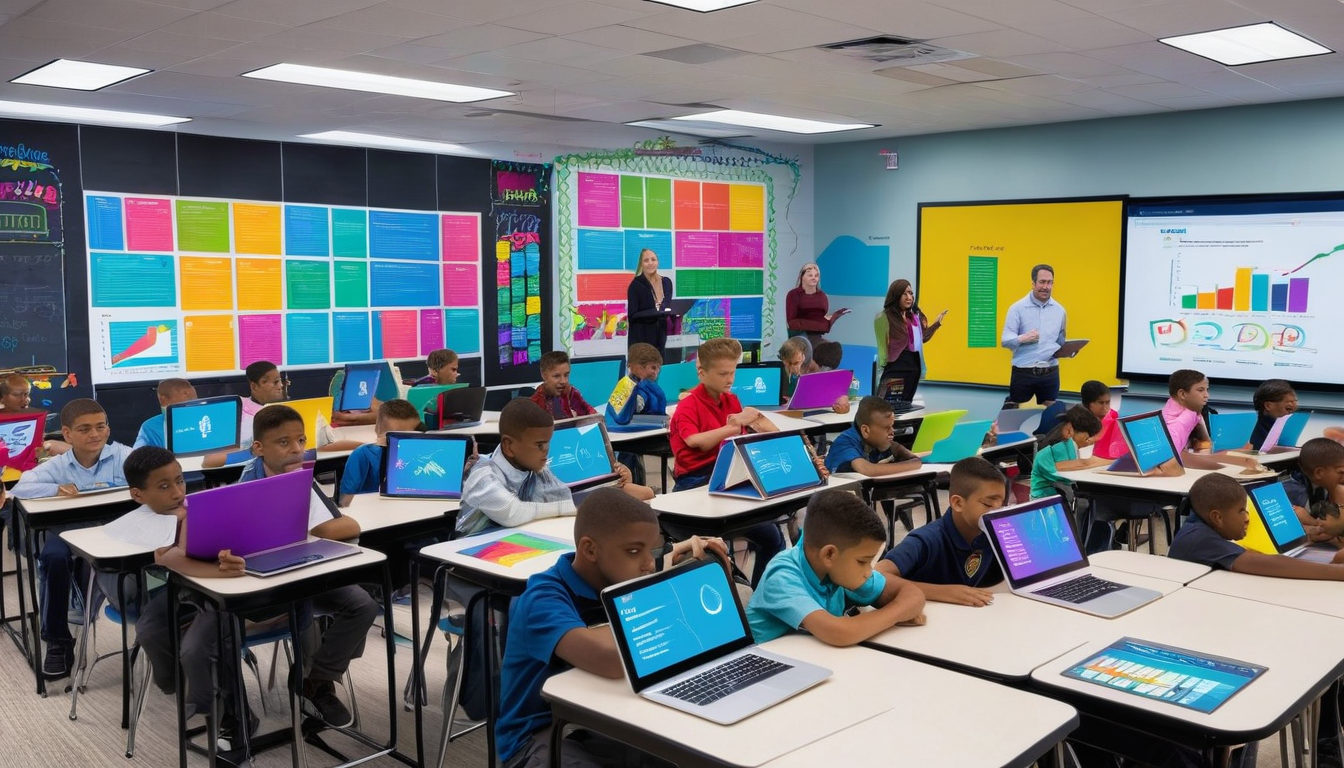
Predictive Analytics for Student Success
In the realm of education, predictive analytics is a game changer, acting like a crystal ball that reveals potential outcomes based on historical data. Imagine being able to foresee which students might struggle before they even step into the classroom. This powerful tool leverages vast amounts of data—from attendance records to past grades—to identify patterns and predict student performance. By doing so, it allows educators to intervene early, providing targeted support to those who need it most.
For instance, predictive analytics can pinpoint students who are at risk of falling behind by analyzing their engagement levels and academic history. With this insight, teachers can tailor their approaches, ensuring that no student is left behind. Here’s a quick look at how predictive analytics can be applied:
| Data Type | Purpose | Outcome |
|---|
| Gamification Element | Benefits |
|---|---|
| Points and Badges | Encourages competition and recognition of achievements |
| Leaderboards | Fosters a sense of community and healthy competition |
| Quests and Challenges | Promotes problem-solving and critical thinking skills |
But how can educators implement gamification effectively? Here are some strategies:
- Set Clear Objectives: Define what you want students to achieve through gamified activities.
- Incorporate Storytelling: Create a narrative that makes learning more relatable and engaging.
- Provide Immediate Feedback: Use technology to give students real-time feedback on their performance.
As we move forward, it’s essential to recognize that gamification is not just a trend; it’s a transformative approach that can redefine educational experiences. By leveraging the power of gamification, educators can create dynamic learning environments that not only enhance engagement but also prepare students for a future where adaptability and creativity are paramount.
In conclusion, the integration of gamification in education is like adding rocket fuel to a car—it supercharges the learning process, making it faster and more exhilarating. As we continue to explore the potential of AI and gamification, the possibilities for enriching student engagement are virtually limitless. So, are you ready to gamify your classroom?
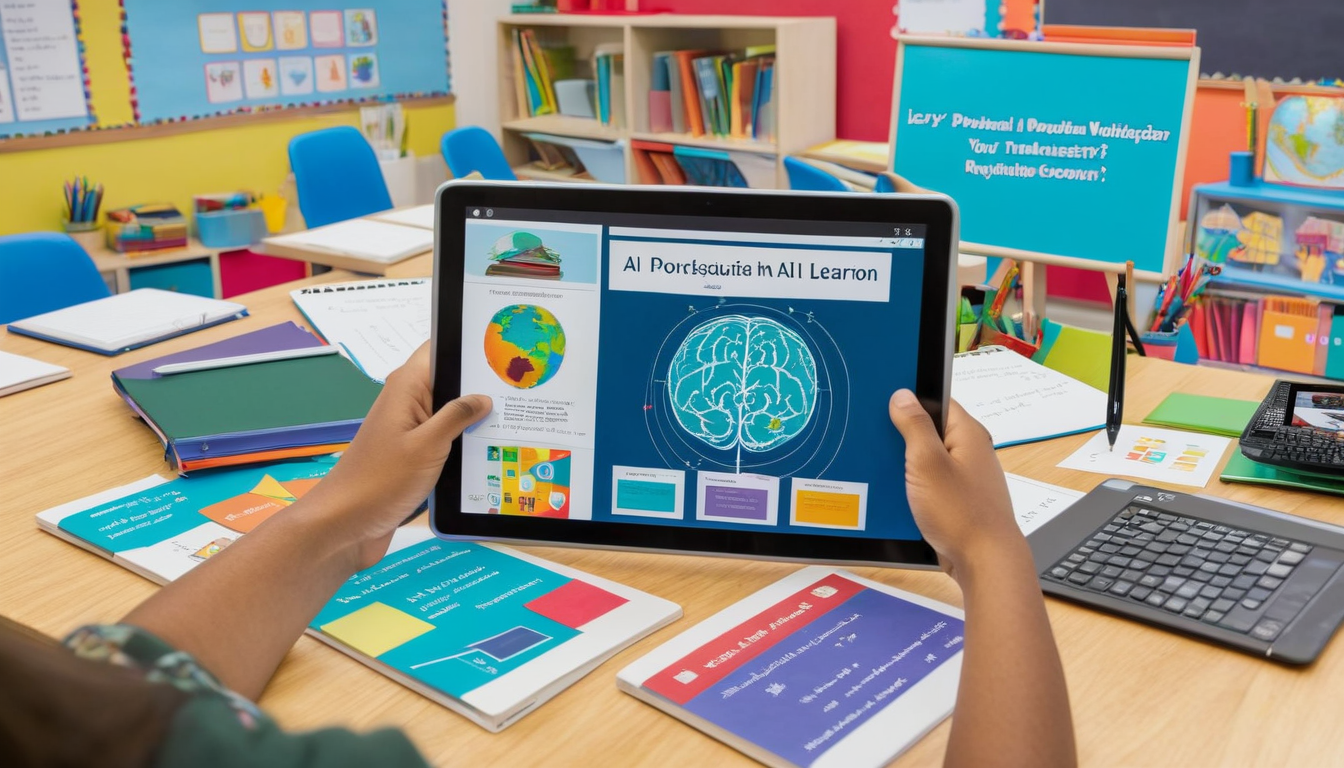
Language Translation and Accessibility
In today’s globalized world, language translation and accessibility in education have become paramount. With classrooms becoming increasingly diverse, the need for inclusive learning environments is more pressing than ever. Imagine a classroom where every student, regardless of their native language, can fully engage with the material. This is where AI steps in, transforming the educational landscape by breaking down language barriers.
AI-powered translation tools are revolutionizing how educational content is delivered. These tools can instantly translate texts, audio, and even video content, making it accessible to non-native speakers. For instance, a student who speaks Spanish can seamlessly access English learning materials, allowing them to keep pace with their peers. This not only promotes inclusivity but also enhances overall learning outcomes.
| Benefits of AI Translation Tools | Impact on Education |
|---|---|
| Real-time translation | Facilitates immediate understanding of lessons |
| Content customization | Adapts materials to fit diverse learning needs |
| Increased engagement | Encourages participation from all students |
| Resource accessibility | Ensures all students have equal access to learning materials |
Moreover, AI can assist in making educational resources more accessible for students with disabilities. For instance, text-to-speech applications can help visually impaired students by reading out loud the content, while speech recognition software can assist those with hearing impairments by transcribing spoken words into text. This kind of support is invaluable, as it empowers all students to engage with their education fully.
In addition to translation and accessibility tools, AI fosters a collaborative learning environment. Students from varied linguistic backgrounds can work together on projects, sharing insights and perspectives that enrich the learning experience. Imagine a group project where students can communicate effortlessly, regardless of their first language. This not only builds teamwork skills but also prepares students for a multicultural workforce.
As we look to the future, it’s clear that the integration of AI in education will continue to expand, paving the way for more innovative solutions. By leveraging AI for language translation and accessibility, educators can ensure that every student has the opportunity to succeed, regardless of their background. The potential is enormous, and the journey has just begun.
“Education is the most powerful weapon which you can use to change the world.” – Nelson Mandela
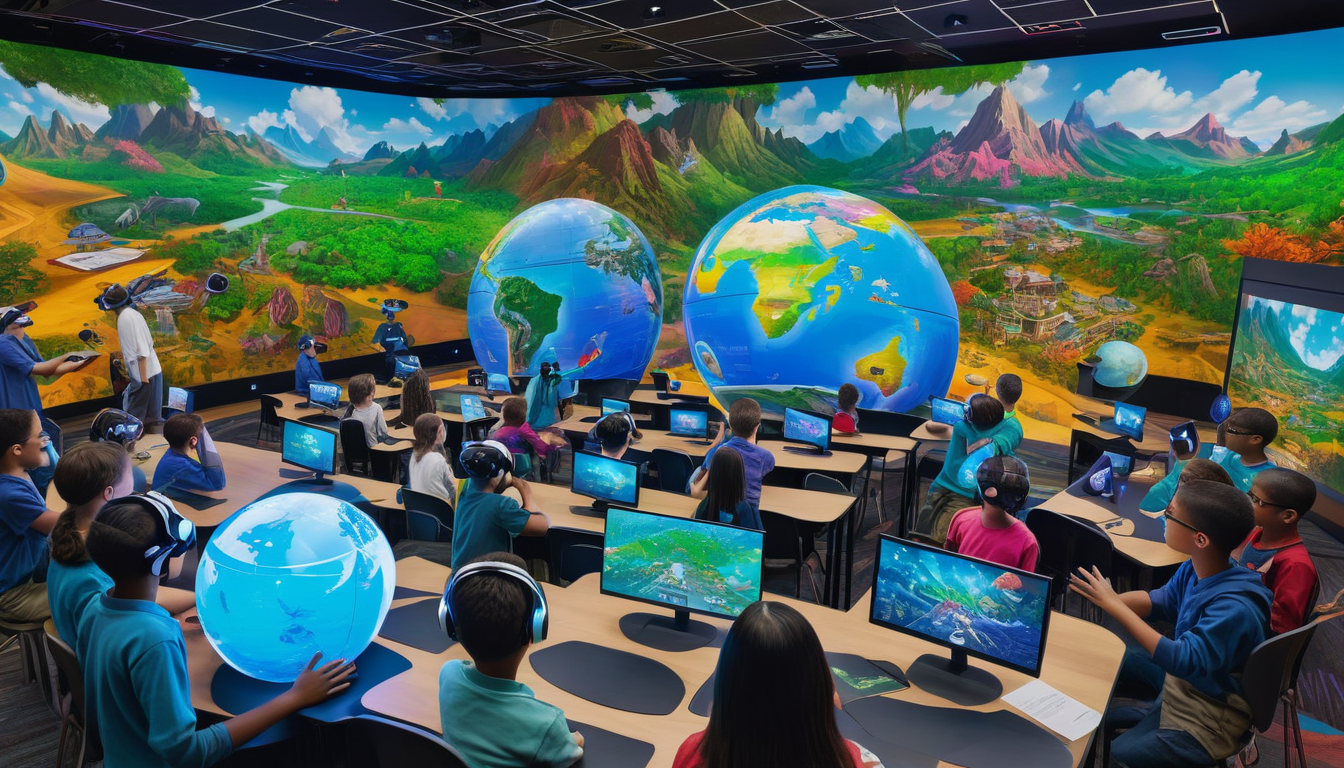
Virtual Reality and Augmented Reality Integration
Imagine stepping into a classroom where the walls dissolve, and you’re suddenly on a vibrant coral reef, observing the intricate dance of marine life. This is the magic of Virtual Reality (VR) and Augmented Reality (AR) in education! These technologies are not just futuristic fantasies; they’re transforming how students engage with learning material. By integrating VR and AR into educational settings, we can create immersive experiences that captivate students’ imaginations and enhance their understanding of complex concepts.
VR provides a fully immersive experience, allowing students to explore environments and scenarios that would be impossible to replicate in a traditional classroom. For example, students can take virtual field trips to ancient civilizations, walk through the solar system, or even conduct science experiments in a controlled virtual lab. On the other hand, AR overlays digital information onto the real world, enriching the learning experience without completely removing students from their physical environment. Imagine using a tablet to see the inner workings of the human body projected onto a classmate!
Here’s a quick comparison of VR and AR in education:
| Feature | Virtual Reality (VR) | Augmented Reality (AR) |
|---|---|---|
| Immersion Level | Fully immersive | Partially immersive |
| Equipment Required | VR headset | Smartphone/tablet |
| Learning Environment | Virtual worlds | Real-world enhancement |
| Examples | Virtual field trips, simulated labs | Interactive textbooks, 3D models |
Both VR and AR can significantly improve student engagement and retention. By providing hands-on experiences that stimulate curiosity and creativity, these technologies make learning feel less like a chore and more like an adventure. However, it’s important to consider the accessibility of these tools. Not all students may have access to high-end VR equipment, but AR can often be utilized on devices many students already own, such as smartphones.
As we look to the future, the integration of VR and AR in education is expected to grow. Educational institutions are beginning to recognize the potential of these technologies to enhance learning outcomes. Incorporating VR and AR into curricula not only prepares students for a technology-driven world but also fosters a love for learning that can last a lifetime.
In conclusion, the integration of Virtual Reality and Augmented Reality in education is not just a trend; it’s a revolution. With the potential to create engaging, interactive, and personalized learning experiences, these technologies are paving the way for a new era of education that meets the needs of every student.
“The future of education is not just about what we learn, but how we learn.” – Anonymous
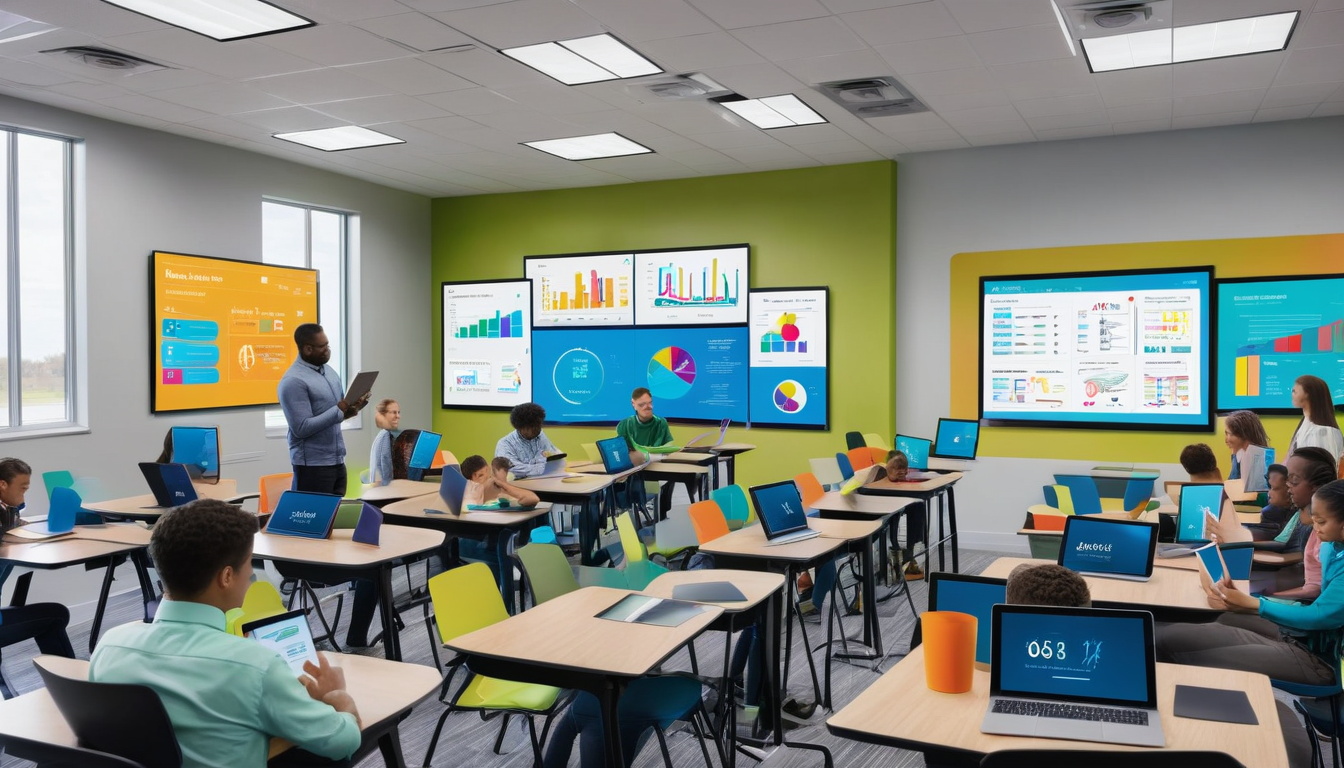
Automated Assessment Tools
In the ever-evolving landscape of education, are revolutionizing how we evaluate student performance. Imagine a world where grading is not only faster but also more accurate, providing educators with deeper insights into their students’ learning journeys. These tools leverage artificial intelligence to analyze various data points, allowing for a more comprehensive understanding of each student’s strengths and weaknesses.
One of the most significant advantages of automated assessment tools is their ability to provide real-time feedback. Instead of waiting days or weeks for grades, students receive immediate responses to their submissions. This instant feedback loop is crucial for fostering a growth mindset, as students can quickly identify areas for improvement and adjust their study strategies accordingly. But how exactly do these tools work?
| Feature | Benefit |
|---|---|
| Instant Grading | Reduces waiting time for feedback, allowing students to learn and adapt quickly. |
| Data Analysis | Provides insights into common errors and trends, helping teachers tailor instruction. |
| Customizable Assessments | Allows educators to create assessments that align with specific learning objectives. |
Automated assessment tools can also handle a variety of question types, from multiple-choice to essay responses. This versatility ensures that assessments can be designed to measure a wide range of skills, from basic knowledge recall to critical thinking and creativity. However, it’s essential for educators to remember that while these tools are incredibly beneficial, they should complement traditional assessment methods rather than replace them entirely.
Moreover, the data collected from these assessments can be used for predictive analytics. By analyzing trends over time, educators can identify which students may need additional support before they fall behind. This proactive approach is essential in today’s educational environment, where early intervention can make all the difference in a student’s academic trajectory.
As we look to the future, the role of automated assessment tools in education will only continue to grow. With advancements in AI technology, we can expect these tools to become even more sophisticated, offering personalized assessments that adapt to each student’s learning pace. Imagine a classroom where every student receives a tailored assessment experience that caters to their unique needs!
Ultimately, the integration of automated assessment tools in education is not just about efficiency; it’s about enhancing the learning experience for both students and educators. As we embrace these innovations, we pave the way for a more effective and inclusive educational system.
In conclusion, automated assessment tools represent a significant leap forward in educational technology. By harnessing the power of AI, we can create a more responsive and supportive learning environment that empowers students to reach their full potential.

AI in Special Education
Artificial Intelligence (AI) is making significant strides in the realm of special education, offering tailored resources and support for students with disabilities. Imagine a classroom where every student’s unique learning needs are met with precision and care. AI technologies are not just enhancing the learning experience; they are revolutionizing it by ensuring accessibility and inclusivity. This transformation is akin to having a personal tutor who understands each student’s strengths and weaknesses, guiding them through their educational journey.
One of the most compelling aspects of AI in special education is its ability to create customized learning plans. By analyzing individual performance data and learning styles, AI systems can adapt educational content to fit each student’s requirements. This is particularly beneficial for students with learning disabilities, as it allows them to learn at their own pace and in a manner that resonates with them. For instance, an AI tool might suggest alternative teaching methods or resources based on a student’s progress and engagement levels.
| AI Applications in Special Education | Description |
|---|---|
| Personalized Learning Tools | AI analyzes student data to create customized learning experiences. |
| Speech Recognition Software | Helps students with communication difficulties by converting speech to text. |
| Interactive Learning Apps | Offers engaging educational content tailored to individual learning needs. |
| Behavioral Analysis Systems | Monitors student behavior and provides insights for intervention strategies. |
Moreover, AI-powered tools can assist educators in identifying students who may require additional support. By utilizing predictive analytics, these systems can highlight at-risk learners, allowing teachers to implement timely interventions. This proactive approach not only helps in addressing academic challenges but also fosters a supportive environment for students. As a result, educators can focus on nurturing each student’s potential rather than merely reacting to challenges as they arise.
In addition to personalized learning and predictive analytics, AI also plays a crucial role in enhancing communication for students with disabilities. For example, speech recognition software can be a game changer for students who struggle with verbal communication. By converting spoken words into text, these tools empower students to express themselves more effectively. This technology is akin to providing a voice to those who might otherwise feel unheard.
As we look to the future, the integration of AI in special education is poised to expand even further. The potential for is immense, and its ability to adapt and evolve based on student needs makes it an invaluable resource. The goal is not just to provide education but to ensure that every student, regardless of their challenges, has the opportunity to thrive academically and socially.
In conclusion, AI is not just a tool; it’s a partner in education, especially for those who need it the most. By embracing these technologies, we can create a more inclusive educational landscape that champions diversity and fosters success for all learners.

Teacher Professional Development
In the rapidly evolving landscape of education, has become more crucial than ever. With the integration of artificial intelligence (AI) in educational settings, teachers are now equipped with innovative tools that can enhance their teaching methodologies and overall effectiveness. Imagine having a personal assistant that analyzes your teaching style and offers tailored feedback to help you grow! That’s the power of AI.
AI can analyze various aspects of a teacher’s performance, from classroom engagement to lesson delivery. By leveraging data analytics, these systems provide personalized feedback that helps educators refine their skills. For instance, if a teacher struggles with student engagement, AI can suggest specific strategies to improve interaction based on successful practices observed in similar classrooms.
Moreover, AI-driven platforms can facilitate continuous learning opportunities for teachers. They can access a wealth of resources, including online courses, webinars, and peer collaboration forums, all tailored to their specific needs. This not only promotes professional growth but also fosters a culture of lifelong learning within the educational community.
| Benefits of AI in Teacher Professional Development | Description |
|---|---|
| Personalized Learning | AI offers tailored resources based on individual teaching styles and needs. |
| Real-time Feedback | Educators receive immediate insights to adjust their teaching methods. |
| Access to Resources | Teachers can easily find and utilize a variety of professional development resources. |
| Collaboration Opportunities | AI connects teachers with peers for sharing best practices and strategies. |
Furthermore, AI can help identify the specific areas where teachers may need improvement. For example, if a teacher frequently receives low engagement scores in their evaluations, AI can analyze the data and recommend targeted professional development courses that focus on engaging students effectively. This proactive approach not only benefits the teachers but ultimately enhances the learning experience for students.
In conclusion, the integration of AI in is a game-changer. It empowers educators to continuously improve their skills, adapt to new teaching methodologies, and ultimately create a more enriching educational environment. As we look to the future, embracing these technologies will be essential for fostering a generation of highly skilled educators ready to meet the challenges of modern classrooms.
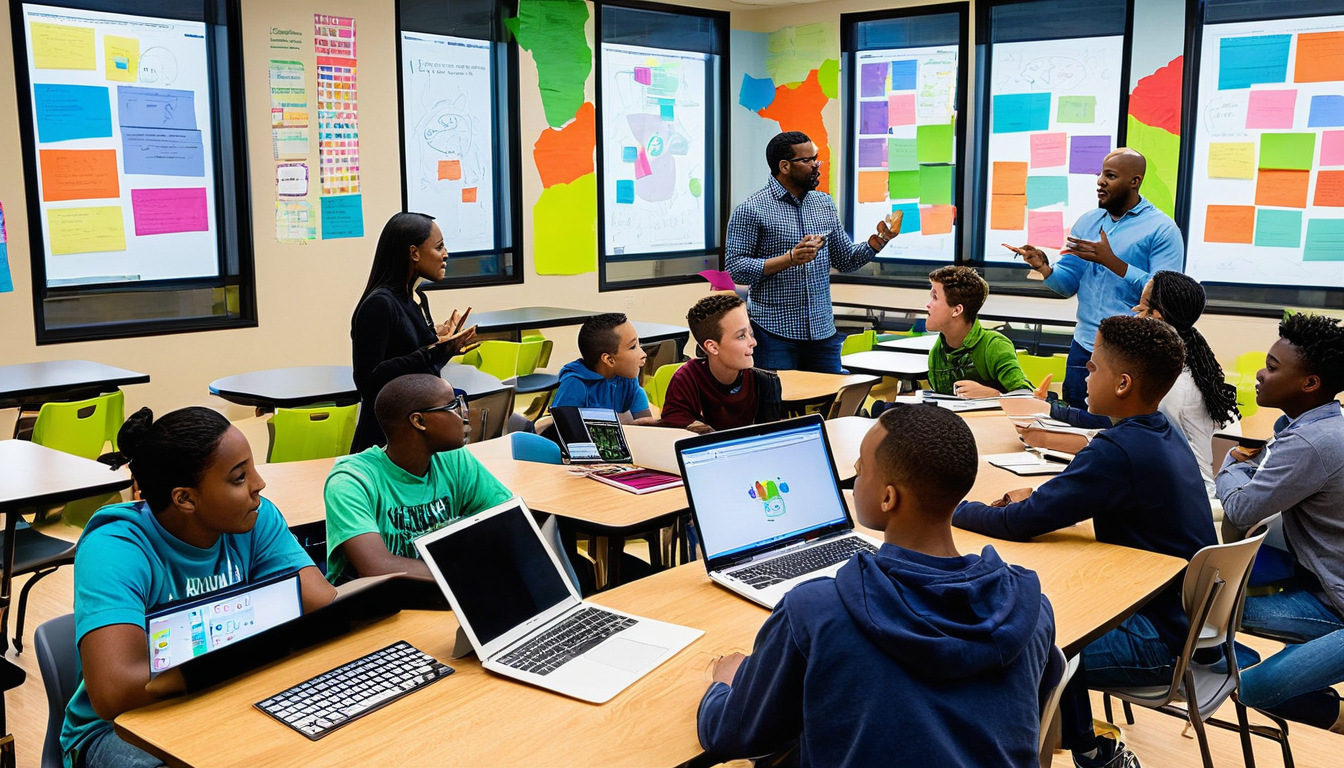
Collaborative Learning Environments
In today’s educational landscape, are becoming increasingly essential. These environments leverage the power of artificial intelligence to connect students with peers and resources, fostering a sense of teamwork and enhancing communication skills that are vital for success in the modern workforce. Imagine a classroom where students are not just passive recipients of information, but active participants in their learning journey, engaging with one another and utilizing AI tools to facilitate discussions and projects.
AI technologies can create platforms that allow students to collaborate seamlessly, regardless of their physical location. For instance, consider a group of students working on a science project. With AI-driven tools, they can share resources, brainstorm ideas, and provide feedback in real-time, all while receiving suggestions from the AI on how to improve their collaboration. This dynamic interaction not only enriches their learning experience but also prepares them for future collaborative endeavors in their careers.
Furthermore, these collaborative environments can cater to diverse learning styles and needs. AI can analyze how each student interacts with their peers and adapt the collaborative tools accordingly. For example, if a student struggles with communication, the AI can suggest specific roles in group projects that play to their strengths, allowing them to contribute meaningfully while also developing their skills.
| Benefits of Collaborative Learning Environments | AI Contributions |
|---|---|
| Enhanced Communication Skills | Real-time feedback on interactions |
| Increased Engagement | Gamified collaboration tools |
| Diverse Perspectives | AI-driven resource recommendations |
| Improved Problem-Solving | Facilitated brainstorming sessions |
To illustrate the impact of AI in creating collaborative learning environments, let’s consider a few key elements that contribute to its success:
- Peer Interaction: AI tools foster discussions among students, encouraging them to share ideas and challenge each other’s thinking.
- Resource Sharing: Students can easily access and share educational materials, enhancing the learning experience.
- Feedback Mechanisms: AI can provide personalized feedback on group dynamics, helping students improve their collaboration strategies.
In conclusion, the integration of AI in collaborative learning environments not only enhances the educational experience but also equips students with essential skills for their future. As we continue to explore the potential of AI in education, it’s clear that fostering collaboration will play a pivotal role in shaping the next generation of learners.
“Education is not the filling of a pail, but the lighting of a fire.” – William Butler Yeats
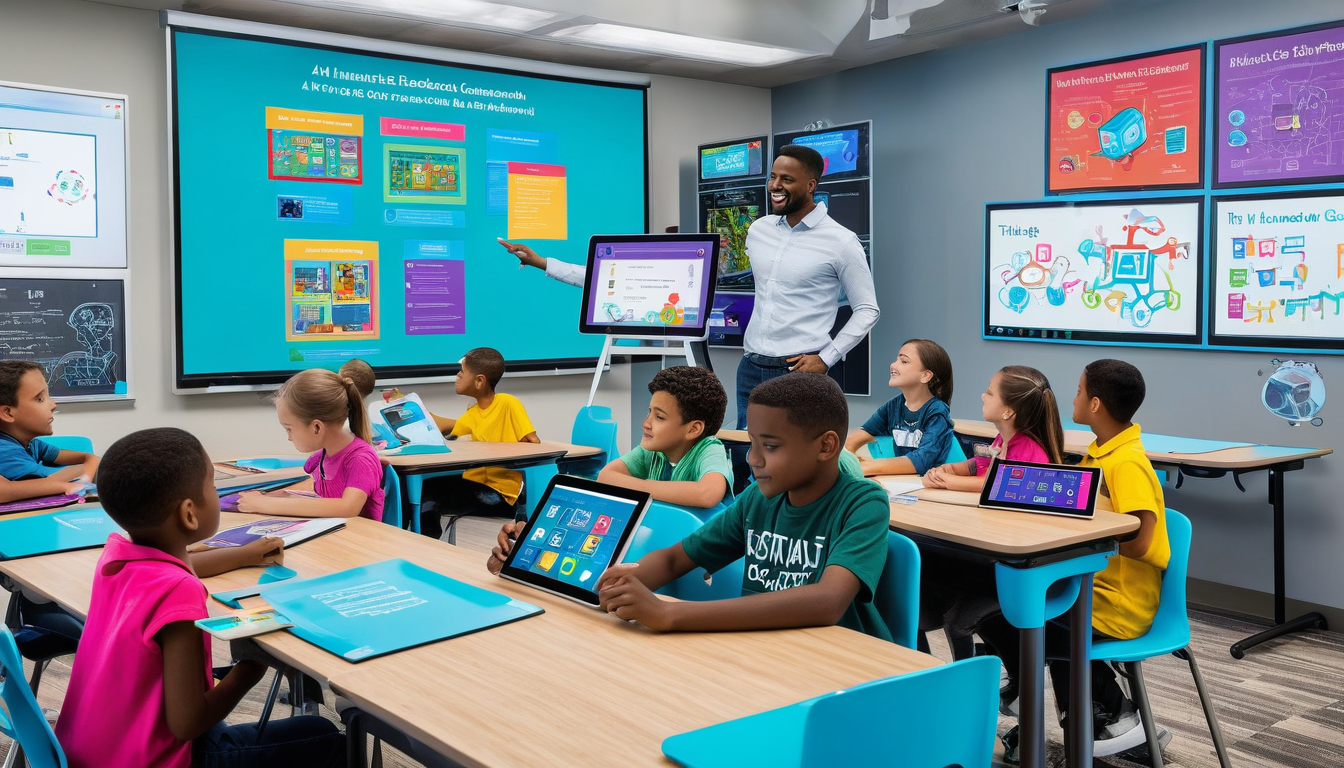
Future Trends in AI and Education
The landscape of education is on the brink of a major transformation, driven by the rapid advancements in artificial intelligence. As we look towards the future, several trends are emerging that promise to revolutionize how students learn and how educators teach. Imagine a classroom where every student’s unique needs are met with precision, where administrative burdens are lifted, and learning becomes an engaging adventure. This is not just a dream; it’s the future of AI in education.
One of the most exciting trends is the increasing use of adaptive learning technologies. These systems utilize AI algorithms to assess a student’s progress in real-time, adjusting the curriculum accordingly. This means that if a student struggles with a particular concept, the system can offer additional resources or modify the lesson to ensure comprehension. It’s like having a personal tutor available 24/7!
Moreover, the integration of virtual reality (VR) and augmented reality (AR) into educational settings is set to create immersive learning experiences. Students will be able to explore historical sites, conduct virtual science experiments, or even simulate complex mathematical problems in a three-dimensional space. This not only enhances engagement but also helps in retaining information more effectively.
Here’s a glimpse of some key future trends in AI and education:
| Trend | Description |
|---|---|
| Adaptive Learning | Personalized learning experiences tailored to individual student needs. |
| VR and AR Integration | Immersive simulations that enhance understanding and retention. |
| AI-Powered Analytics | Data-driven insights to improve teaching strategies and student outcomes. |
| Collaborative Learning Platforms | Tools that foster teamwork and communication among students. |
Additionally, the role of AI in teacher professional development is gaining traction. Through AI-driven analytics, educators can receive personalized feedback on their teaching methods, helping them refine their skills and adapt to new pedagogical approaches. This continuous improvement cycle not only benefits teachers but ultimately enhances the learning experience for students.
As we embrace these innovations, it’s essential to consider the ethical implications of AI in education. Ensuring data privacy and security will be paramount, as educational institutions collect vast amounts of data to personalize learning experiences. Moreover, the challenge of ensuring equal access to these technologies for all students remains a critical concern.
In conclusion, the future of AI in education is bright and full of potential. With ongoing advancements, we can expect to see a more inclusive, engaging, and effective educational landscape. As we step into this new era, let’s be excited about the possibilities that lie ahead!
Frequently Asked Questions
- What is personalized learning in AI education?
Personalized learning in AI education refers to the use of artificial intelligence to tailor educational experiences to individual students. By analyzing data on a student’s learning style, pace, and preferences, AI can adapt content and resources to enhance engagement and understanding.
- How do intelligent tutoring systems work?
Intelligent tutoring systems use AI algorithms to simulate one-on-one tutoring experiences. These platforms provide real-time feedback, address specific challenges, and help students grasp complex subjects by offering personalized support and guidance.
- What administrative tasks can AI automate in education?
AI can automate various administrative tasks such as grading, scheduling, and resource allocation. This automation helps educators save time and focus more on teaching, ultimately improving the overall efficiency of educational institutions.
- How does predictive analytics support student success?
Predictive analytics utilizes historical data to forecast student performance. By identifying at-risk learners, educators can implement timely interventions and support strategies, helping students stay on track to achieve their academic goals.
- What role does gamification play in AI-enhanced education?
Gamification incorporates game-like elements into educational experiences, making learning more interactive and enjoyable. AI enhances these gamified environments, boosting student motivation and retention through engaging activities.
- How does AI improve language translation and accessibility?
AI-powered translation tools break down language barriers, making educational materials accessible to non-native speakers. This promotes inclusivity in diverse classrooms, ensuring all students can engage with the content effectively.
- What are the benefits of integrating virtual and augmented reality in education?
Integrating AI with virtual and augmented reality creates immersive learning experiences. Students can engage in interactive simulations and visualizations, deepening their understanding and creating memorable educational moments.
- How does AI contribute to special education?
AI technologies provide tailored resources and support for students with disabilities. By customizing educational content to meet their unique learning needs, AI ensures that all students receive equitable access to education.
- In what ways can AI assist teacher professional development?
AI can analyze teaching practices and offer personalized feedback to educators. This helps teachers refine their skills, adapt to new methodologies, and ultimately improve their effectiveness in the classroom.
- What future trends can we expect in AI and education?
As AI technology evolves, its integration into education will expand, leading to innovative solutions that enhance teaching and learning experiences. Expect more personalized, engaging, and efficient educational environments in the future!
You can explore everything you're looking for in the Wikilogy library. Simply type the keyword and press enter to begin your search.
The word you want to search: History
Sign in to Digital AI News
Create Account
New membership are not allowed.
Notice: ob_end_flush(): Failed to send buffer of zlib output compression (0) in /home/yippuuco/digitalai.news/wp-includes/functions.php on line 5471
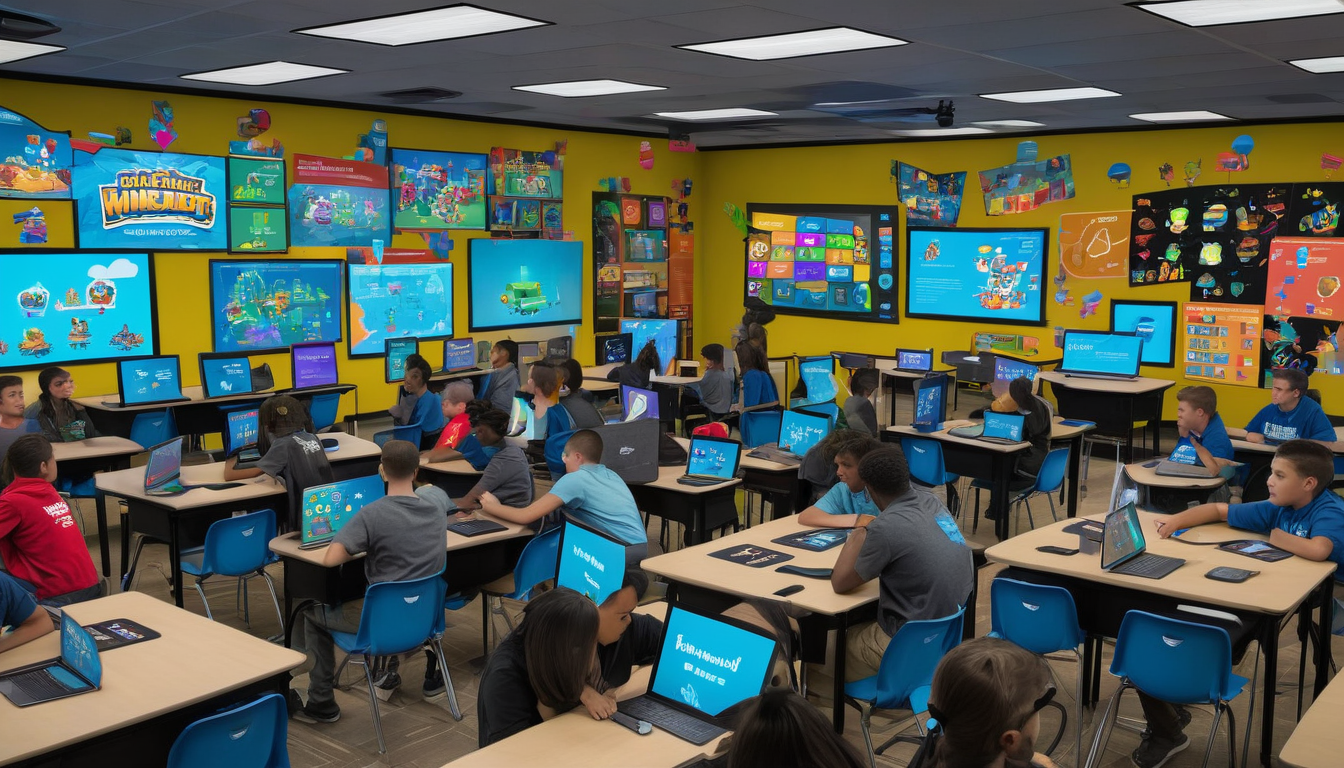














The AI regulation and compliance section is spot on. With the rise of AI adoption, ethical considerations will be crucial.…